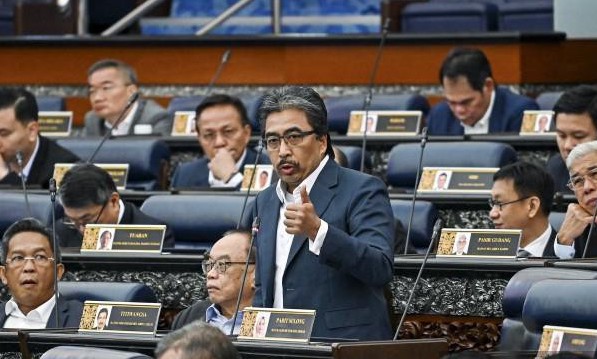ALTHOUGH it’s been over 14 years since the 2008/2009 Global Financial Crisis (GFC) triggered by the fall of Lehman Brothers on Sept 15, 2008, there are still plenty of lessons to be learned from this devastating financial crisis induced Great Recession.
The collapses of Silicon Valley Bank (SVB), Signature Bank and Silvergate Bank in the US as well as a massive lifeline liquidity support given to the Credit Suisse have caused turmoil in global financial markets, unleashing worries that the US regional banks centric crisis has intensified fears of a broader contagion global financial crisis.
Coincidentally, this came barely few days after the US Federal Reserve chairman Jerome Powell signalled that the ultimate interest rate level is likely to be higher than previously guided if evidence continues to point to a robust economy and persistently high inflation.
What are the fault lines causing the fall-out of regional banks? Some have blamed the Fed’s ultra-low and loosened monetary policy during the pandemic which has shifted gear to aggressive monetary tightening post pandemic to fight inflation at all costs.

A majority of lenders have received an influx of massive customers’ deposits, largely from the technology sector and start-ups (concentration risk) with the banks having invested the surplus deposits into safe and high-quality long-dated government bonds which have promised good returns when interest rates were low.
But when the Fed started to hike interest rates aggressively by 425 basis points during the course of 2022, this caused bond prices to crash, leading to unrealised mark-to-market losses (yet to crystallise so long as banks hold the bonds to maturity).
In the case of SVB, the losses were realised as they were forced to sell off their investments at a loss to raise capital, resulting in a loss of confidence and ultimately a bank run.
A combination of lower risk appetite, high inflation, high interest rate (borrowing cost), weakening business confidence and lower demand have led customers to deposit less and withdraw their deposits for operating capital.
Ripple effect
Many global banks are facing the same pressure of macroeconomic parameters. Central bankers around the globe have normalised their interest rate from historic lows, causing bond yields to increase substantially and eroding the value of banks’ underlying assets.

This does not imply that all banks automatically face the same risk of the failed regional banks in the US. Banks with sound risk management of assets and liabilities, strong capital adequacy and liquidity positions should be able to withstand the shocks.
Is this implosion of failed banks a harbinger of global financial crisis, a déjà vu of the 2008/2009 GFC? Will it escalate into a wider contagion effect not only within the US but also spread to other major financial markets, hence triggering a systemic crisis?
Global regulators and central bankers are keeping close vigilant of the current development as they gauge the direct and indirect exposure of their domestic banks to these failed banks while preparing to undertake forceful measures and liquidity operations to stem contagion risk if the banks fallout develops into a wider proportion of financial and economic impact.
We reckon that there could be ripple effects in the US banking system and economy although it should be “manageable” albeit having dented confidence.
Having learned from the painful lessons of the 2008/2009 GFC, swift and unprecedented measures as well as financial resources were put into place by the governments and banking regulators to contain the fallout and also stem a repeat of systemic financial crisis.
The US regulators have taken extraordinary measures to ring-fence the failed banks through a back-stop guaranteeing of the bank’s depositors’ money to shore up confidence in the financial system.
In the case of Credit Suisse which is Switzerland’s second-largest bank, the magnitude of financial ripple effects will be more severe akin to a Lehman moment.
Protecting depositors
Time is of the essence. The regulators’ decisive and forceful emergency measures to backstop all the depositors of the failed bank can eliminate a self-fulfilling panic if depositors and creditors believe that the lender of last resort (the Federal Reserve in this case) is prepared to address any liquidity pressures that may arise.
Protecting the interests of depositors remain the top priority. Governments and central bankers must avoid systemic financial or banking crises as they can be very damaging and have lasting impact on the economy.
Collapsing trust in the banking system and depositors’ run, lenders’ collapsed as well as borrowers’ default have significant negative consequences for economic and business activities. Self-fulfilling credit market freeze and curtained lending to households and businesses would grind the economy to a standstill.
The effect of share wealth loss due to a sharp falling stock market, followed by demand retrenchment could push the already slowing global and US economy into deep economic slowdown or in the worst case, tailspin into a deep recession.
Financial spill-overs are still a risk for the US economy, complicated by the Fed’s continued monetary tightening path, albeit smaller magnitude of interest rate hikes in 2023 would amplify recession- n fears.
The Fed is juggling its delicate balancing act between keeping price stability (controlling inflation) and ensuring financial stability in stemming the contagion risk from current banks’ fallout rout.
While the incidence of systemic banking crises and financial crises have had happened over the past 20 years with high financial, economic and social costs, we forget the painful lessons and repeat the same mistakes despite increased regulations and oversight of the banking sector. – March 19, 2023
Lee Heng Guie is the executive director at Socio-Economic Research Centre (SERC) Malaysia.
The views expressed are solely of the author and do not necessarily reflect those of Focus Malaysia.
Main photo credit: Reuters










